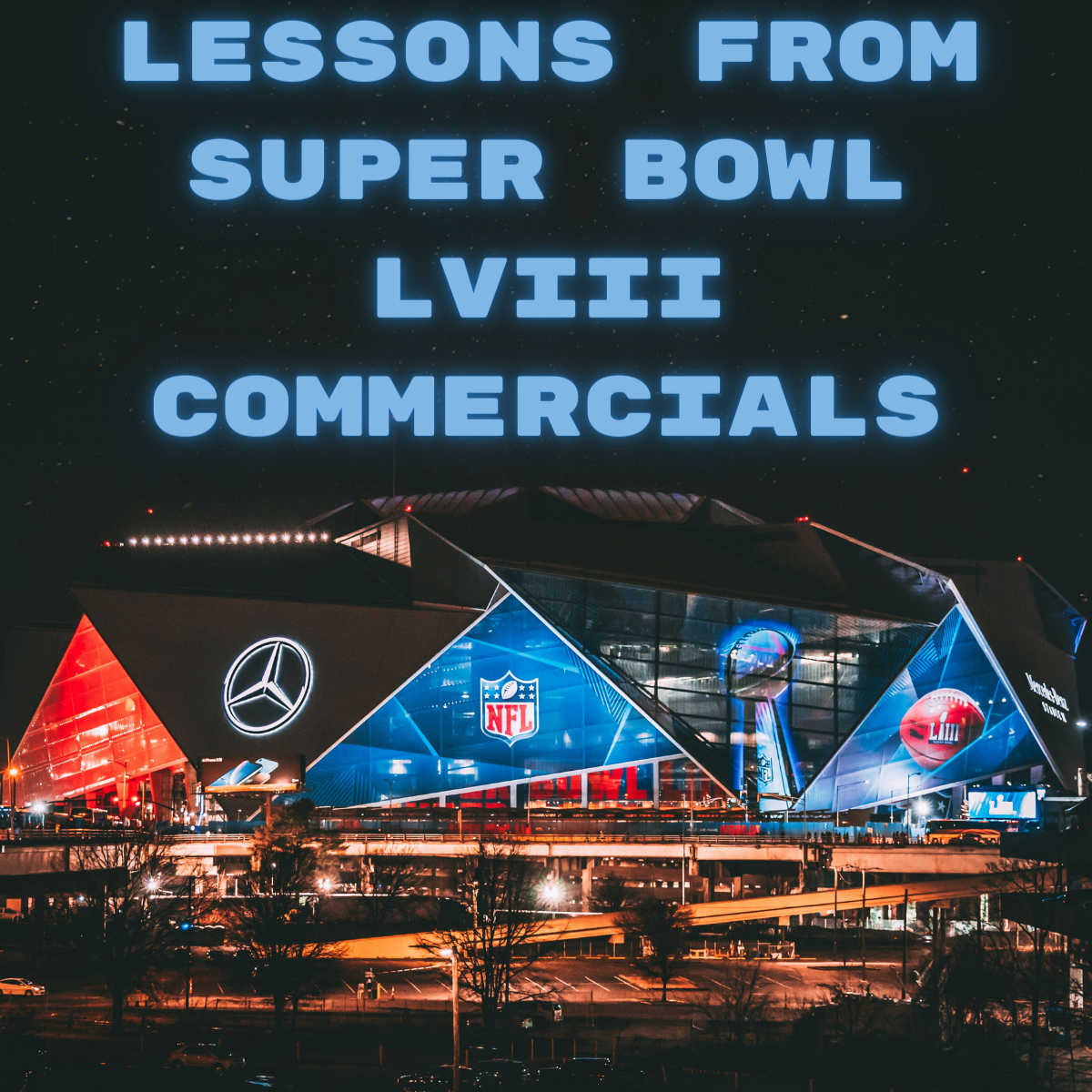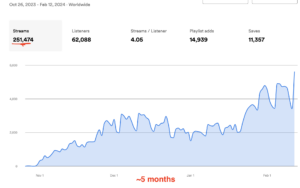Wondering if YouGrow’s TikTok promotion works?
Here’s the short, three-word answer: Yes, it works.
Here’s the slightly longer answer: I tried a “TikTok Video and Account Promotion” with YouGrow, going with their Starter package that guarantees 55K–75K+ views on a TikTok video using TikTok’s ad platform.
Sure enough, the campaign generated 67.9K views on my client’s video, as well as 1.4K followers on his account.
Pretty good stuff.
On the flip side of the coin, most of the followers the campaign drew seem to be fairly disengaged; many of the new followers have profiles that follow thousands of accounts, and most haven’t re-engaged very often with my client’s videos. This isn’t too surprising, but it is worth noting.
Okay, that’s the high-level.
If you’re interested in giving YouGrow a shot yourself, you can click here to try a campaign.
(That’s an affiliate link, btw, because, as you’ll see below, I do think YouGrow is legit.)
If you’re interested in hearing the details – the what, why, and how of the campaign – well, that’s probably a good idea.
Stick around and let’s get into it.
The background on our YouGrow TikTok campaign
First, I want to be straight-up: I’m kind of a TikTok newb.
Don’t get me wrong – I’ve thought a ton about the platform, I’ve read a bunch about how it works, and I’ve studied what high-performing artists are doing on it. Because it’s basically the biggest channel in music right now, and it probably will be for the next three years (at least). I’d have to live under a rock to ignore it completely.
But still – I haven’t actually done anything on TikTok. Two Story Media, you may notice, doesn’t have a TikTok profile (yet). I don’t have a personal account. And I haven’t run any sort of TikTok promotional campaign for any of my clients, either.
“Okay, why are you telling me this?” you’re thinking. Then, after reflection: “And doesn’t your lack of tactical experience on TikTok kind of undermine your authority to write about it?”
Good questions, my friend. Good questions.
Answers: I’m telling you that I have no experience on TikTok a) in the interest of transparency, and b) to lay out the context for this promotional experiment.
And yeah, maybe it does undermine my authority a little bit, but I think it’s probably also relatable – because TikTok’s only been a thing for a few years, and if you’re reading this, you probably don’t have a ton of experience in promo on the platform, yourself.
Long-story-short, the point is that, going into this, I was curious about TikTok, but I really didn’t have much of an idea of what to expect from promotion on the platform. So, when Luka, who’s the TikTok Team Director at YouGrow, reached out to me about trialing their offering, I was all-in.
The different types of TikTok promotion
I started the campaign by having a quick video consultation with Luka.
I’ve known the YouGrow guys for a few years now (they’re one of my go-to recommendations for Spotify promotion – which I am tactically experienced with ha), so I went into the campaign trusting Luka’s recommendations.
As it turns out, they offer two types of promotion: What they call “Sound Promotion” and “TikTok Video and Account Promotion”.
Sound promotion
“Sound Promotion” is, essentially, an influencer campaign (and of course, for most musicians, the “sound” will be a song).
Using this methodology, YouGrow promises to get your sound promoted by influencers with a certain total of followers. The idea is that those influencers make videos using your song; in turn, their audiences hear it, and maybe – just maybe – other people make videos with it too, causing your song to go viral.
This method can definitely work. But it’s a lot more like playing the lottery; most campaigns don’t cause songs to go viral.
When I talked to Luka about my client’s goals, he recommended YouGrow’s other type of campaign: Video and account promotion.
Video and account promotion
Instead of relying on influencers sharing a sound, this type of campaign uses TikTok’s ad engine to promote a video from an account. If you’ve ever boosted a post on Instagram, the idea is the same; you pay TikTok and they show your video to a lot more people than would normally see it. There’s setup and targeting involved with this if you want to do it well, of course, but that’s the basic idea.
Luka believes that most artists benefit from this approach, and his opinion makes sense. By driving traffic to your own video, you’re growing your own profile directly, rather than hoping for some sort of detached virality.
…And a few final points of clarification
Okay, before I get into how the campaign worked, I also want to show you the actual video we promoted. Here it is:
@itsthrxttle Replying to @jean.starr21 Here’s more of the song, it’s on my soundcloud if you want to hear the rest #fypシ #genshinteleport #newmusic
♬ original sound – Thrxttle
The artist is Caleb Stewart, a self-described “lofi hip hop emo sad boy” – IMO, the kind of person who makes the kind of stuff that should play really well on TikTok. He’s been posting regularly on TikTok for a little while, but, like most people, he didn’t feel like he’d tapped the platform’s full potential.
Before we started the campaign, I think he had a couple hundred followers.
Okay, I think that’s all the context you need to understand the process. Let’s get into that next.
The process of running the campaign
Once we decided to run an account / video promotion, the next step was to choose a video to focus on.
This was harder than it might sound.
If you’re on TikTok, you probably know that the videos that perform the best aren’t always the ones you actually want people watching. For instance, Caleb had a video about Pokemon that was performing pretty well – but we didn’t want to pay to promote that, because the whole point of this was to grow an audience for his music, not to establish him as some kind of TikTok comedian.
We settled on the video I shared above. You’ll note that it’s not just the song – Caleb sets the context for the song first, then sings along to his track. The hope was that the audience would connect with him as an artist.
Setting things up
Once we picked a video, things started rolling. Here’s the page where I clicked “go”:
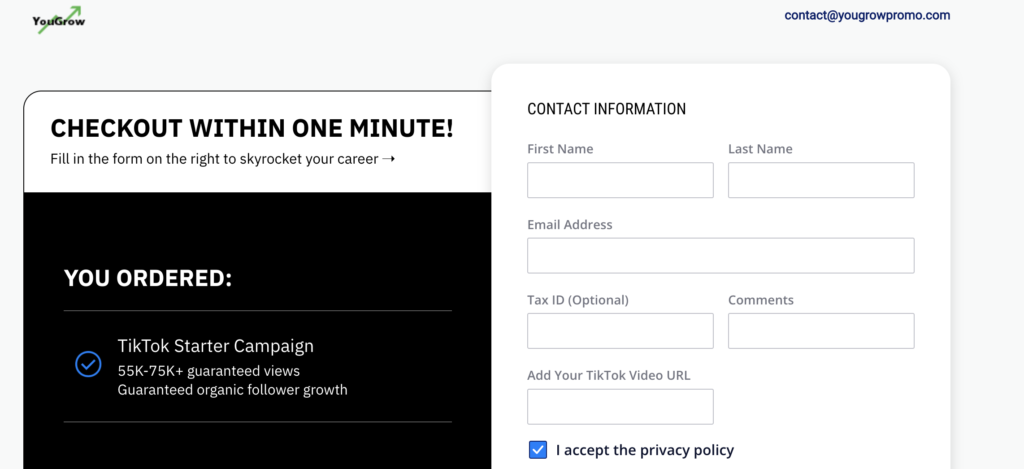
On purchase, you’re asked to give YouGrow the URL of the video you want to promote. They’ll email back asking for the “shareable ad URL” of the video.
Here’s what that process looks like:
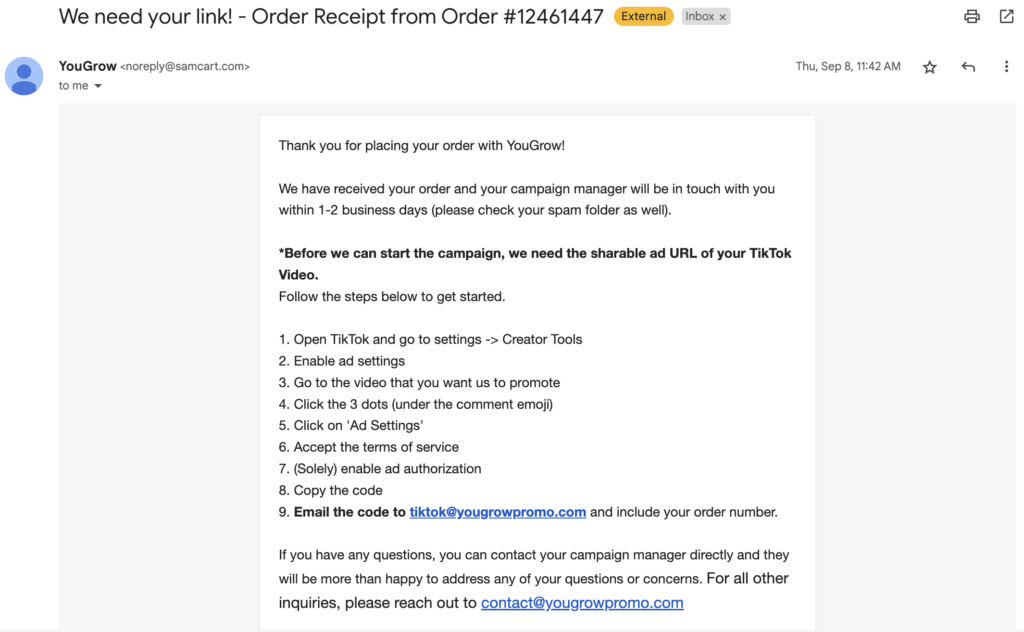
As you can see, it takes a couple minutes of setup on the creator side, but it’s not too difficult. Once we sent them the URL, they set up ads for us, and the results started rolling in.
About a week after we went live, the YouGrow team sent me this email:
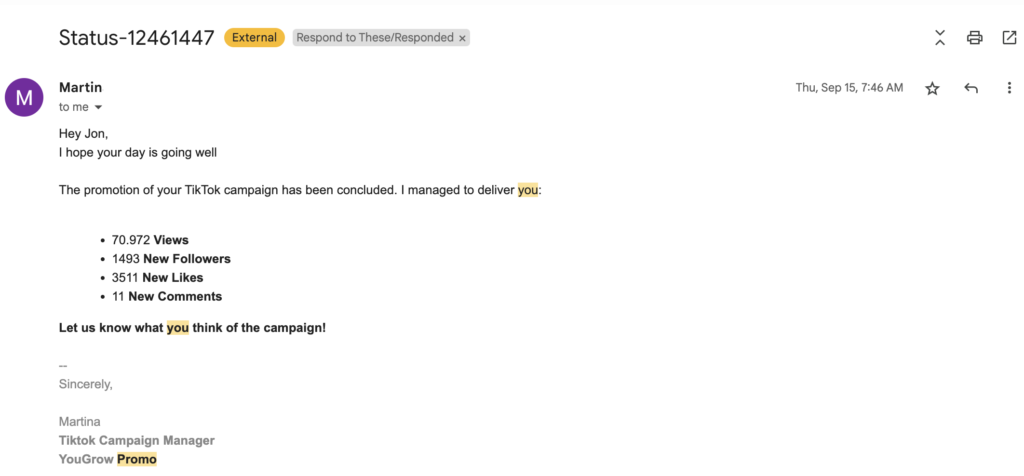
All told, the campaign was short, sweet, and yielded pretty good results. Good stuff, right?
Well, yeah – but there are a few caveats.
Let’s breakdown the results next.
The results of our TikTok promo campaign
Okay, to start: At a high level, these results are awesome.
Seriously, 1,493 new followers for a spend of less than $200? That’s a cost of less than $0.10 per follower, which means you could get 10K followers for less than $1,000. Things are always changing, but that’s way cheaper than what it’s costing me to run follower campaigns on Meta’s platforms at the moment.
In terms of raw engagement numbers, things are pretty solid, too. Caleb’s top video had a couple thousand views; with ads, this one climbed to near 70K and got a bunch of likes and comments to boot.
That’s all cool stuff. But once you get below the sheer volume of the surface numbers, there are a couple of drawbacks.
Drawbacks to the campaign results
The main thing to note is that, even though the campaign drove engagement, it didn’t drive a ton of engagement. Caleb and I emailed back and forth a bit to talk about the results, and he mentioned that his like-to-view percentage on the promoted video was around 5%, while the goal for a viral video is about 10%. In other words, while a ton more people saw this video than usually see Caleb’s posts, percentage-wise, relatively few of those viewers actually engaged with it.
Similarly, it seems like most of the accounts that followed Caleb as a result of the campaign also follow thousands of other profiles.
For instance, here’s the profile of a user that commented on the video:
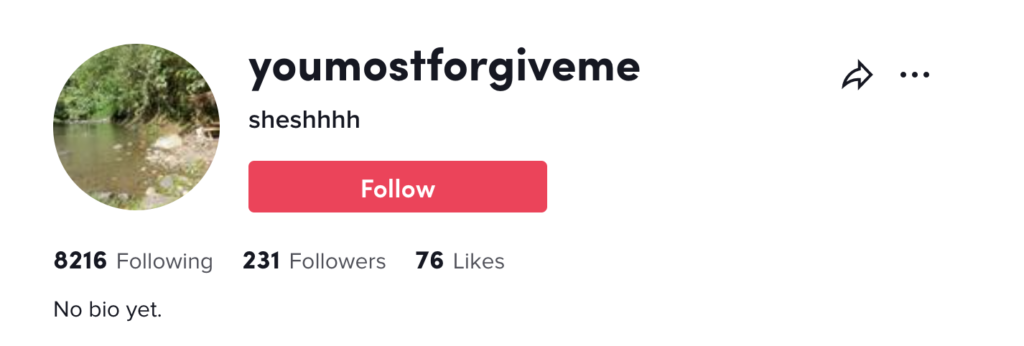
They’re following 8k+ accounts, which is a) nuts and b) way more than one person can realistically keep track of.
Buzzing over their profile, it seems like they’re a real person. But clearly they’ve got a real itchy trigger finger for the TikTok follow button, and they haven’t really engaged with any of Caleb’s stuff since the promoted video.
Most of the accounts that followed Caleb as a result of this campaign look similar.
Now, two caveats to this caveat:
1) I have limited experience with TikTok’s ad platform, but I know that ad platforms, in general, are designed to fulfill campaign objectives as efficiently as possible. In other words, TikTok is incentivized to show the ad to people who are likely to follow an account – and, obviously, people who are likely to follow one account are more likely to follow a freaking ton of accounts.
2) While the majority of Caleb’s new followers looked like this, there are plenty that look more normal. It’d be absolutely ridiculous to get 1.4K followers for $200 and have all 1.4K of them be highly engaged with you.
Final thoughts on the campaign
I’ll let Caleb go first. Here’s the email he sent me, summarizing his take on the promotion:
It seems like all the follows I got were from accounts that follow THOUSANDS of people. I didn’t click on really anything that seemed like a quality fan.
It’s cool to have the boosted image that when people come to my account it won’t look like I’m a total noob, but I’m not really hopeful that these people that followed me will engage in the future in almost any real capacity.
I also noticed my like to view percentage was around 5% and the goal for a viral video is about 10%. So I’d be interested to know if it would work better on a video that was more “viral worthy.”
But I thought it was super cool seeing engagement all day. Also I notice a lot of my other videos got some new views and likes, which was also cool.
I’d generally agree with his synopsis. Here are my personal pros and cons:
Pros from the promotion
The experience was smooth.
As I’ve said before, I like the YouGrow team. They did a nice job of communicating the whole way through the campaign, and the turnaround was really fast.
The raw numbers are awesome.
Caleb went from a couple hundred followers to 1.4K+ in a week. That goes a long way toward establishing him as more than a TikTok newb.
Cons from the promotion
The engagement wasn’t great.
While the campaign drove huge numbers, most followers don’t seem to be tracking with Caleb’s profile. The data bears this out; for the most part, his new videos only get a couple hundred views (there might’ve been a slight uptick, but it definitely hasn’t been huge) despite the fact that his follower count grew exponentially.
Now, as Caleb noted, it’d be interesting to see if engagement varied using another video. I’ve run a bunch of ads on other platforms, and it’s definitely true that the content plays a huge role in a campaign’s success. I’d imagine that’s true on TikTok, as well, and I can see a scenario where another video drives higher levels of engagement.
But hey – I told you, I’m a TikTok newb, so what do I know?
Want to try a YouGrow campaign yourself?
If you’re interested in giving this a shot, here’s the link again. TikTok promo certainly isn’t a magic bullet; I think the key to growing on any platform is to be consistent over a long period of time. But after using YouGrow, I can speak to the fact that their ad-based promo does drive numbers, and I’m confident in saying that the team over there is legit.
Whether you run a campaign or not, I hope that this breakdown of my experience has been helpful. Most of all, though, I hope you’re encouraged as you work on building a community around your artistry.
It’s a grind, but it’s worth it.






